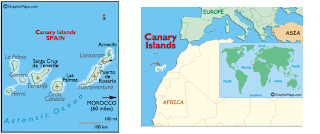 |
| Damarapa bamboo |
 |
| Blue bamboo |
This is a real/surreal color. The new growth is blue, it then turns green, then pale gold. It's proper botanical name is Himalayacalamus hookerianus, its a native to China. It is non-invasive, clumping and grows to a height of 20 feet. It flourishes in the SFBG as do many denizens of the Cloud Forest.Where has blue bamboo been all my life?
The Cloud Forest is going to be something So Cal coastal residents may become more and more interested in, as our annual summer temperatures continue to drop. We get more like a cloud forest everyday. So what is it? A cloud forest is also called a fog forest, and exists both in the tropics and in more temperate zones. "It is characterized by a persistent, frequent or seasonal low cloud cover..." W .
May Gray, June Gloom, July Why, August Less ...our 10 degrees colder summer is certainly characterized by a persistent, frequent or seasonal low cloud cover..." That's the bad news. The good news is Cloud Forests are home for some of the most exciting plants on the planet. The San Francisco Botanic Garden in Golden Gate Park (larger than Central Park in NYC) devotes big swatches to the Himalayan Cloud Forest plants, and even more territory to the Meso American Cloud Forest which covers over 7,000 miles of the Americas, as well as the Canary Islands, parts of South Africa and
Australia, New Zealand and our own Redwood Coast. So even if our favorite Big Boys are not ripening properly, there can still be joy in Mudville...We could do this. We could grow a giant salvia the hummingbirds were clustered around
 |
| Hummingbird Heaven |

This salvia can easily grow to 6 feet if you let it. If you have a shady spot under a big pine, a place few plants really like you could grow a patch of crinum lilies:
Crinum moorea
This have enormous, hard to dislodge bulbs, so be sure about where you are planting them. Tried digging some up once. You'd need a jack hammer. Like the nerines and our Central Coast "Naked Ladies" the crinums are members of the amaryllis family. Some are S. African natives as is this one. "Port St Johns (Eastern Cape) form: pink flowers produced in September to October" From the Natal Botanical Garden http://www.plantzafrica.com/plantcd/crinummoor.htm.
 |
| Crinum moorea growing at SFBG |
There are more, stay tuned, for the native plants of the Meso American forest.












